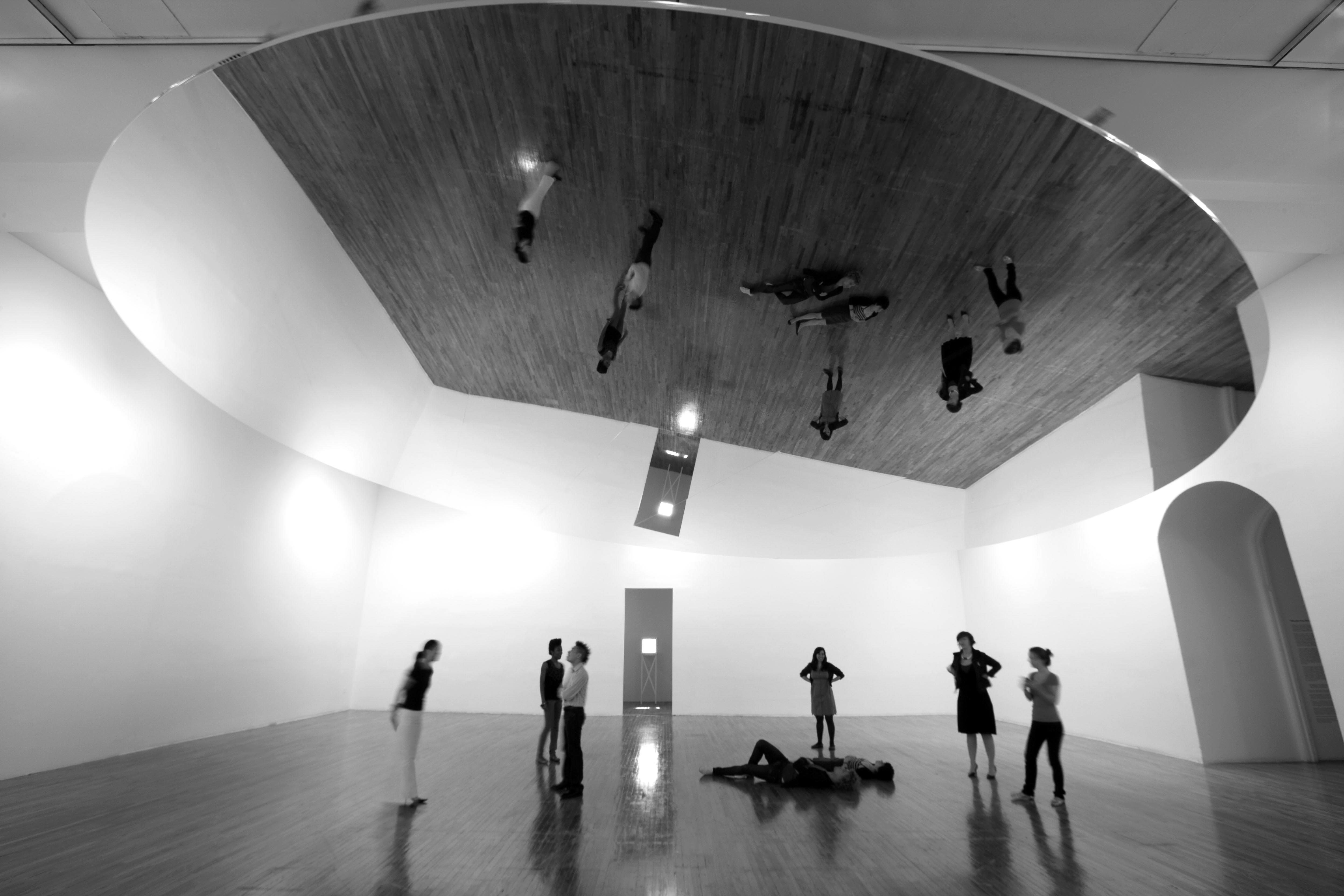Danish-Icelandic artist Olafur Eliasson (born 1967) is curious about how we perceive the world: How do our thoughts, feelings, and actions co-create our surroundings? Are we aware of this? Do we assume responsibility for the world we share? Eliasson produces installations, sculpture, photography, and film that connect people to each other and the environment. His studio in Berlin, established in the mid 1990s, today employs about seventy craftsmen, architects, technicians, and a research and communications team.
– Bio from Eliason’s collaboration with Ai Weiwei MOON

For Eliasson, the moment audiences engage with the work of art, the pieces began their work. He sees the audience as participants who “co-produce reality”; this participation becomes a situation where viewers respond to the work and the work responds for the viewers. It is at this moment that his art begins a series of individual manifestations brought about through our collective personal interactions with the work. In his view then, the work of art is not complete until the last viewer steps from the exhibition.
In the spectacular large-scale projects he’s famous for (such as “Waterfalls” in New York harbor), Olafur Eliasson creates art from a palette of space, distance, color and light. This idea-packed talk begins with an experiment in the nature of perception.

Olafur Eliasson, Beauty, 1993,

Olafur Eliasson. 360° room for all colours. 2002

The Weather Project in the Tate Modern London [2003]
The Weather Project in the Tate Modern London [2003] creates a more powerful multi-sensory experience, as it is an interior, immersive environment. Eliasson was drawing a parallel between the chaotic and unpredictable nature of society and that of weather. An artificial sun was placed at one end of the turbine hall. A mist was produced using humidifiers and a mix of sugar and water, creating a surreal experience of the grand hall. The ceiling was entirely mirrored, allowing visitors to see themselves as shadows in the orange light. A “mesmerising display of dematerialisation – from the transformation of the ceiling into a duplicate of space, to the unrelenting evaporation of the clouds – returns the viewer as subject to the centre of the work.” A common theme in Eliasson’s work is to juxtapose subject and object, or as the phenomenologist Maurice Merleau-Ponty, allow us to see ourselves seeing.


